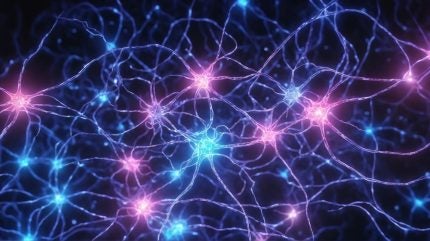
Nexalin has unveiled mixed results from a clinical trial evaluating its deep intracranial frequency stimulation (DIFS) technology in patients with mild Alzheimer’s disease, with the primary endpoint missed but positive data reported in secondary endpoints.
The results, published in Alzheimer’s Research & Therapy, demonstrate improvements in memory and cognitive function in patients who underwent the therapy compared to a sham group.
Shares in the Nasdaq-listed company dipped during trading hours on 17 October but rebounded on 18 October at market open just 0.75% down. Nexalin has a market cap of $13.8m.
US-based Nexalin’s DIFS is type of transcranial alternating current stimulation (tACS) – a non-invasive brain stimulation approach that involves applying current to modulate neural activity in the brain. Nexalin has developed the NEXALIN ADI to apply the therapy, a transcranial alternating current stimulator with pads for positioning on the head.
A total of 46 Chinese patients were enrolled in the TRANSFORM-AD study (NCT03920826), with half receiving 30 one-hour sessions of Nexalin’s therapy and the other half receiving sham stimulation. After 15 days of treatment, there was no statistical difference between the two groups on the primary outcome – change in Alzheimer’s Disease Assessment Scale cognitive subscale (ADAS-Cog) up to 21 days.
Nexalin stated in its press release “The DIFS group exhibited a statistically significant improvement in memory, as measured by the ADAS-Cog compared to the sham group.”
How well do you really know your competitors?
Access the most comprehensive Company Profiles on the market, powered by GlobalData. Save hours of research. Gain competitive edge.

Thank you!
Your download email will arrive shortly
Not ready to buy yet? Download a free sample
We are confident about the unique quality of our Company Profiles. However, we want you to make the most beneficial decision for your business, so we offer a free sample that you can download by submitting the below form
By GlobalDataNexalin did not immediately respond to Medical Device Network when asked for comment on ADAS-Cog outcome clarity.
The study authors did report significant improvement in secondary outcomes, including Mini-mental State Examination (MMSE) and Montreal Cognitive Assessment (MoCA). Functional MRI (fMRI) also showed enhanced neural activity and increased blood flow in the hippocampus, the region in the brain responsible for memory processing. This suggests that DIFS may positively influence brain function and slow the progression of Alzheimer’s disease, according to Nexalin. The system was well tolerated with mild tingling presenting as one of the minor side effects.
Nexalin’s CEO Mark White said: “Our DIFS technology shows great promise as a drug-free alternative or in combination with existing treatments by working directly on the brain’s electrical activity to modulate cognition.”
Whilst the promise of tACS is still at an early stage, there is an increasing buzz around non-invasive and non-pharmacological treatments for neurological conditions. On the back of positive study results by University of California, San Francisco (UCSF) investigating implants for Parkinson’s disease, GlobalData medical device analyst Cynthia Stinchcombe said: “As the landscape of medical treatment evolves, particularly with these sophisticated systems, a promising shift is being witnessed towards more personalised and effective treatment strategies for neurological conditions.”
The global neuromodulation device market is expected to reach $11.4bn by 2033, according to a report by GlobalData.



